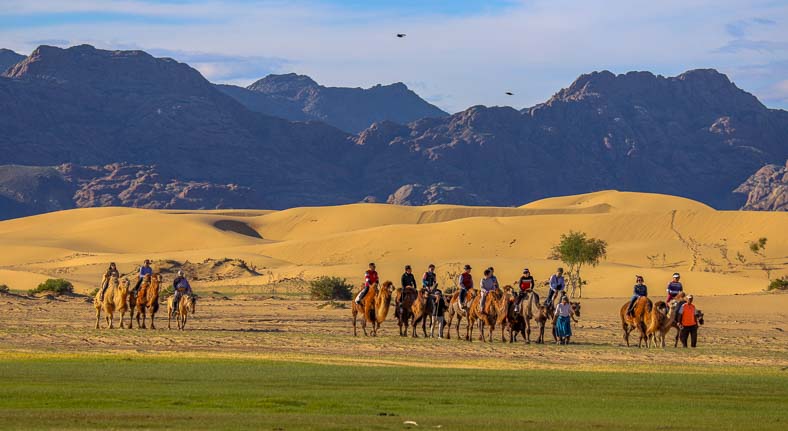from 0 review
2 Days
No Cancellation
20 people
English, Espanol
Nomadic life has been an enduring lifestyle across ancient societies, marked by movement, resilience, and close ties to nature. In regions from icy poles to deserts, nomads adapted to varied landscapes, thriving in ways that echo through modern nomadic communities in places like Central Asia and Iran. Despite a decline in the traditional nomadic population, those who continue this way of life preserve a unique heritage of art, music, and survival techniques.

Nomads have been integral to human history, often mentioned in ancient texts and historical records. From the Scythians and Mongols of Central Asia to the Bedouins of the Middle Eastern deserts, nomads played pivotal roles in trade, cultural exchange, and even warfare. Their lifestyle, based on seasonal migration to follow resources, was once widespread and remains documented in ancient societies, reflecting a way of life deeply connected to the environment.
Animals in Nomadic Life: Adaptations Across Regions
Nomads’ choice of animals reflected the landscapes they inhabited. In the polar regions, reindeer and huskies were essential for transport and food. Desert nomads, like the Bedouins, relied on camels for their endurance in harsh climates. In mountainous areas, such as Central Asia, yaks, horses, and goats served as reliable sources of milk, meat, and wool. Jungle nomads domesticated smaller animals for sustenance, while plains-dwelling groups raised cattle, sheep, and goats.
Food and Sustenance: Meat, Dairy, and Foraged Foods
Diet was essential to survival, with animals often serving as the primary food source. Meat and dairy products were dietary staples, and nomads were skilled in using every part of an animal, minimizing waste. In Central Asia, for instance, fermented mare’s milk, known as kumis, is a popular drink, while dried meats provided sustenance during long journeys. Foraging for wild herbs, nuts, and roots supplemented their diets and added variety.

Clothing and Adaptation to Climate
Nomadic clothing reflected both the need for practicality and cultural identity. Made from animal hides, wool, and furs, their garments shielded them from weather extremes. In cold climates, thick layers of fur and wool kept them warm, while desert nomads wore loose, breathable clothing to stay cool. Central Asian nomads are known for their colorful robes and intricate patterns, which serve both functional and aesthetic purposes.
Shelter and Mobility: Portable Homes
Nomads developed ingenious methods to create portable shelters that suited their migratory lifestyle. The iconic yurt of Central Asia, crafted from wood, felt, and fabric, could be quickly assembled and dismantled. Nomads in Iran’s Zagros Mountains use “black tents” made of woven goat hair, ideal for climate adaptation. These homes were carried by pack animals or carts, allowing entire communities to relocate efficiently.

Protecting Against Threats: Wildlife and Harsh Climates
Life in nature posed threats from wild animals and unpredictable weather. Nomads developed weapons such as bows, spears, and knives for defense. Many communities kept guard dogs to protect livestock. Against the elements, they relied on sturdy clothing, well-insulated tents, and knowledge of the land to find shelter during storms, making survival possible even in the toughest climates.
Care and Community: Health and Social Support
Nomadic communities maintained close bonds, often gathering around fires to share stories, treat ailments, and celebrate events. When someone fell ill or was pregnant, the community rallied to support them. They used traditional medicine, made from herbs and natural ingredients, for healing. With no permanent settlements, nomads developed a strong sense of interdependence and mutual aid, which remains central to their lifestyle.
Tools and Trade: Farming, Craftsmanship, and Exchange
Though farming was limited, many nomads practiced small-scale agriculture when possible, planting grains or foraging for plants. Their craftsmanship, however, stood out: they produced handmade tools, rugs, textiles, and jewelry, which became valuable trade items. Many nomadic artifacts, from Persian carpets to felted hats, remain treasured worldwide. Trade not only sustained them but also facilitated cultural exchange with neighboring communities.
Modern Nomadic Populations: Iran and Central Asia
In Iran and Central Asia, nomadic life remains visible, though only a fraction of the population maintains a traditional lifestyle. Tribes like the Qashqai and Bakhtiari in Iran and the Kyrgyz and Kazakh in Central Asia continue to migrate seasonally, preserving customs that date back centuries. The resilience of these communities highlights a dedication to heritage, as well as adaptability to modern influences.

Decline of Nomadic Populations and Modern-Day Nomadism
In recent centuries, industrialization, urbanization, and national borders have led to a decrease in traditional nomadic lifestyles. Governments encouraged or even forced nomadic groups to settle, resulting in a loss of traditional knowledge and lifestyle. However, some nomadic populations continue to survive, particularly in Iran, Central Asia, and Mongolia, as they retain strong cultural identities, self-sufficiency, and resilience.
Current Nomadic Populations: Focus on Iran and Central Asia
In Iran and Central Asia, nomadic groups like the Qashqai, Bakhtiari, and Turkmen still maintain their traditions. These groups are known for their distinct cultural heritage, marked by colorful textiles, music, and oral storytelling. These nomads, many of whom live in Iran and Afghanistan, maintain a strong connection to nature and continue to pass down their cultural heritage through songs, poetry, and epics.
In today’s world, preserving nomadic culture is essential as it offers unique perspectives on sustainability, adaptability, and harmony with nature. Nomadic life, especially in places like Iran and Central Asia, not only enriches cultural diversity but also provides insight into a simpler, self-sufficient lifestyle. Despite the decline in traditional nomadism, the surviving nomadic populations offer a window into humanity’s past and a reminder of our connection to the natural world.
Leave a review